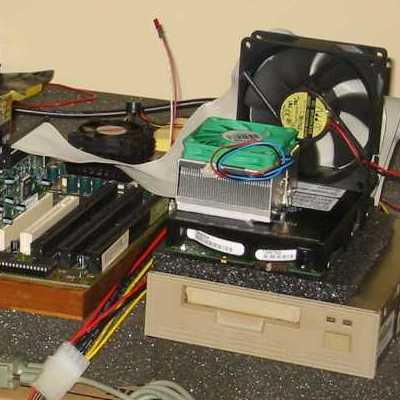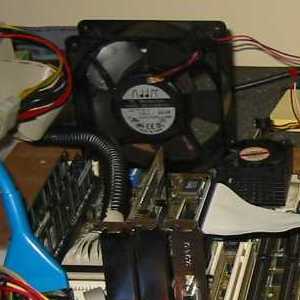 The final hardware menagerie assembled to recover data from 10-yr-old (and older) DAT tapes (click image for a better view). The real story will be what I find on those tapes. Hopefully: A backup of the comic-database that I have since re-created, but with only a portion of the data the original contained; data files from the BBS I created and operated in the 80’s and 90’s; program files and archives from the extensive download and file-trading system operated as part of that BBS; http://www.fidonet.org/ FidoNet stuff; personal records, emails, games; who knows?
The final hardware menagerie assembled to recover data from 10-yr-old (and older) DAT tapes (click image for a better view). The real story will be what I find on those tapes. Hopefully: A backup of the comic-database that I have since re-created, but with only a portion of the data the original contained; data files from the BBS I created and operated in the 80’s and 90’s; program files and archives from the extensive download and file-trading system operated as part of that BBS; http://www.fidonet.org/ FidoNet stuff; personal records, emails, games; who knows?
This is something I’ve been trying to get to work again for quite awhile. I finally gave up on the old, original hardware (‘486 processors, VLB motherboards, archaic versions of DOS and Windows, etc) and purchased a new, cheap PCI SCSI adapter. I had a few problems getting the old hardware to work with the new, but after a few hours of google-assisted refresher courses on SCSI and the specific hardware items, I finally hit on the right combination. Hint: Replacing the terminator resistors may seem like all you need do for your “end of the line” SCSI device, but if there’s a jumper marked TPR, there may be one more step to proper termination. I did still resort to using some older hardware, since I couldn’t bring myself to format a functioning, high-speed system to install Windows 98 (which is the most current OS that the necessary backup software would run on).
There’s really a long, long (loooonnnnggggg) story behind this saga of data retrieval, but rather than outline the whole thing, let’s just say this was a pleasant trip down memory lane – a trip that would rival any http://en.wikibooks.org/wiki/A_Plus_Certification A-Plus Certification “crash course” in existence. I’d be happy to give details if anyone is morbidly curious, or needs help in a similar situation.
Now I get to spend a few hours pulling data off tapes and moving it to DVDs. Then I can pore over the recovered data and determine what is worth keeping, and what can be safely tossed in the bit-bucket. Tedious work, but I’m happy to finally be able to do it!
Edit:
 Things got a little warm around the RAM, so I set a 120mm fan in place blowing over that part of the motherboard (and half the room… that’s a big fan!). That SCSI hard drive doesn’t help things much… it was so hot I burned my finger on it… that’s why you can see a CPU Heat Sink sitting on top, and a fan just to draw heat away from that. All of these heat inducing factors are a lot more “under control” when enclosed in a case; I chose not to cram these components into a case while I was swapping parts around, and now that the job is underway, there’s no point in doing that now. No problems, I have plenty of spare case fans laying about, and the power supply is more than adequate for the job.
Things got a little warm around the RAM, so I set a 120mm fan in place blowing over that part of the motherboard (and half the room… that’s a big fan!). That SCSI hard drive doesn’t help things much… it was so hot I burned my finger on it… that’s why you can see a CPU Heat Sink sitting on top, and a fan just to draw heat away from that. All of these heat inducing factors are a lot more “under control” when enclosed in a case; I chose not to cram these components into a case while I was swapping parts around, and now that the job is underway, there’s no point in doing that now. No problems, I have plenty of spare case fans laying about, and the power supply is more than adequate for the job.
Edit: The final outcome was… lots of old, neat to browse through stuff, some data I had all but forgotten about that I’m pleased to be able to backup and store away again (on easily recoverable media!), and yes, the database I was hoping to find. Now if only I hadn’t used Lotus Approach to create it, I might even have the interface and indexes to go with it… (MS Access doesn’t import from the 1992 version of Approach 🙁 ) Now to see if I can get the 15 year old 40Meg tape drives working….!